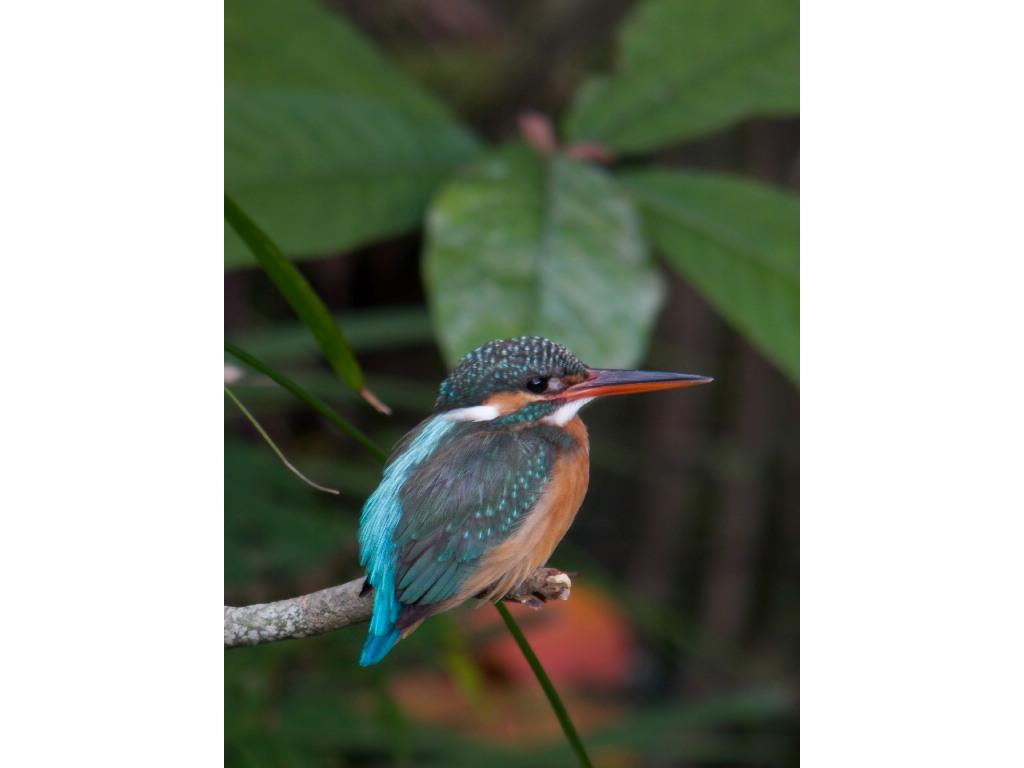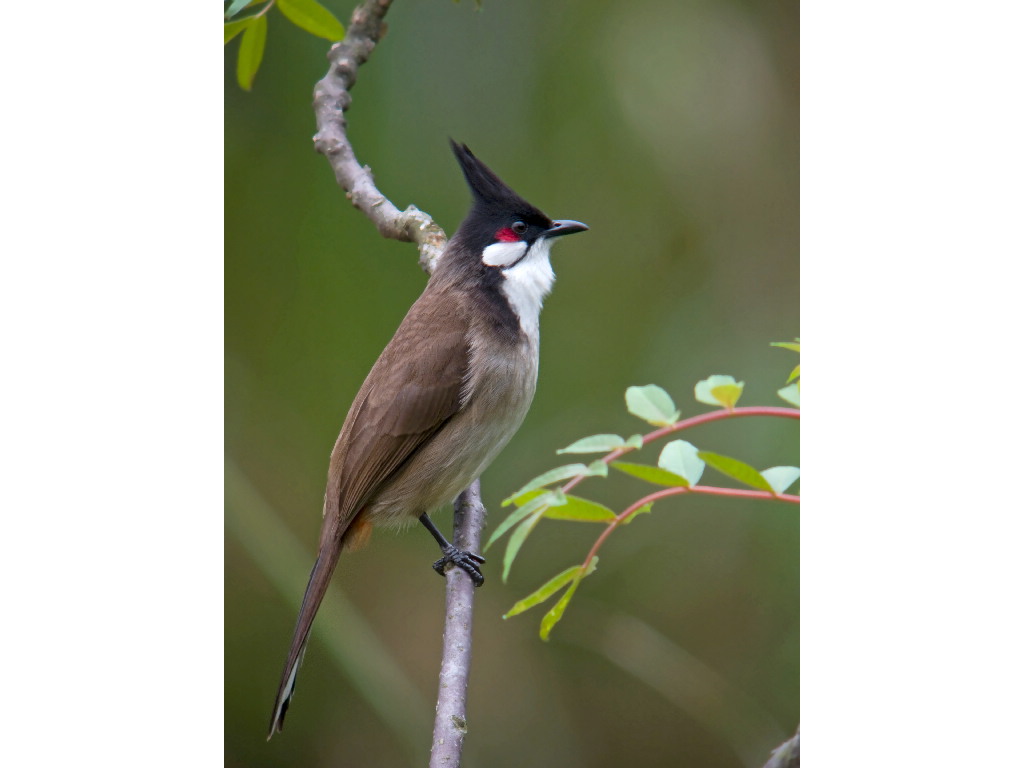Shooting particulars
Taken with the 30x and 45x eyepieces, Ricoh GXR and its 24-72mm zoom lens
Tai Shui Hang
Feb 27, 2009 pm
3 Common Kingfisher (45x-eyepiece with the zoom lens focal length at 15.3mm, i.e. 72mm for the 135mm format)

4 Oriental Magpie Robin (45x-eyepiece with the zoom length focal length set at 6mm, i.e. 28mm for ther 135mm format)

5 Red-whiskered Bulbul (45x-eyepiece with the focal length set at 15.3mm, i.e. 72mm for the 135mm format)

6 Chinese Bulbul (30x-eyepiece with the focal length set at 15.3mm, i.e. 72mm for the 135mm format).
Vignetting occurred and the vignet set in from about 65mm onward)
 Lens quality
Lens quality
From the digiscoping point of view, this 24-72mm zoom lens is just fair in quality. Since I have been using Nikon CP8400 and P5100 for digiscoping, my comparison was made based on these two lenses.
On the whole, CP8400 is the best and this 24-72mm is the worst. The 24-72mm is not a sharp lens all the way through. Its sharpness is satisfactory only for the range from 32mm to 50mm. At the tele-end, the image produced is not solid enough, with details in the shadow difficult to be disnerned.
Color modes and quality
The images above were all taken in the natural color mode. If the vivid mode or the standard mode had been used, the details in the shadow positions would have become dull and messy. The colors of the images would have been quite artificial as well, with the tone falling toward the blue and green sides.
GXR's EVF and exposure
The image of the hot-shoe-mounted EVF is bright and vivid and it gives you the impression that the shot is well taken as regards focusing and exposure. However, when the images are viewed on the computer, they turn out to be darker. I don't know why this has been the case. This fallacy is exposure is detrimental for you have been at home seeing all the mess.
The image on the EVF is contrastive as well, so despite the fact that the exposure is normal, the details in the shadow tend to be pretty dark-out, so I tend to increase exposure to have the details in the shadow to be revitalizable in post treatment.
I shoot with the centre-weight average metering mode all the time when doing digiscoping. For the GXR, I usually have to increase exposure by 2/3 a stop to 1 stop in order to obtain the kind of exposure I normally could get while working with the Nikon cameras. I don't know the reason why. Probably, the white letters on the circumference of the zoom lens may have been the cause. These letters reflect light back onto the eyepiece, complicating exposure.
Raw and JPEG images
It is normal that the JPEG images are better looking than the raw ones. This works on GXR. Strangely, the JPEG files tend to be less contrastive than the raw ones. The complication to me for that is that it is less feasible to monitor the color and tone of the raw image since it has already been contrastive.
Image processing software
I use Photoshop CS4 and I don't know if it works well for Ricoh's DNG raw images. My experience is that while in CS4, there seems to be not much space in Ricoh's raw images for CS4 to manuver as regards exposure, tone and colors as the images have been pretty contrastive by themselves.
Focusing
Fast and accurate on the whole.
Overall experience
Experimenting with the camera for an afternoon, I have the feeling that GXR is not that suitable for digiscoping purposes. Probably, this has been so because GXR's color management philosophy is more for the creation of vivid images that appeal to the senses. It depends on the quality of the primary light to make the color philosophy works. So when processing secondary images from the eyepiece, the GXR fails to yield the kind of vividity that its digit processing unit is engineered to produce.
In the mean time, if you would like to see more details in your bird shots, GXR may as well fail you. Vivid images tend to be contrastive in tone and so, it is natural that details in the shadow positions of GXR's shots will become less discernable. In addition to this, frankly speaking, the 24-72mm is not an outstanding lens!
Pete
[
Last edited by lwingkay at 27/02/2010 23:22 ]


